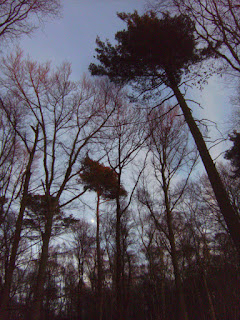Ice was gathering up on my window, and the beams cracked with cold; and the woods did call me to give me lessons of life. So I walked away from the hostile world of man into the realm of deadly winter... just some 100 m away from the warmth. A different world is waiting for those who can see it.
Is this ice or a map of a land unseen? Winter is death, but without death there would be no life. We can witness what happens when people want to neglect and renounce the fact that all things must end... to blossom anew. If this is a map, it is alien to our sight. It shows not a path from here to there but a path of how and then.
This is the dew of winter; precious as the moon in a silvery night.
The stars rise even in the vine that throttles the fern; I quest the fern for the runes of the frost... the ancient Math ap Mathonwy did not know... ahem... too much more than I.;-D.. just a tiny bit maybe..;-D. or a tiny bit more...ANYWAY:-D, what I find there is no speech that can refer.
The trees were swaying in a silent breeze, stone-cold, bone - cold, sawy, toothy, gritty as sand, and yet there was a gentle, silent song echoing in my soul.
Somewhere twilight, twilight falls...
Night is nearing while there is still light.
And yet, besides the holly, the old well springs up warmly from the bosom of the deep and dark soil.
Winding paths I walked through woods all crooked...
Where does the moon wander when the night is dark?
Where does the river flow, two ways at once?
Twilight falls.




























